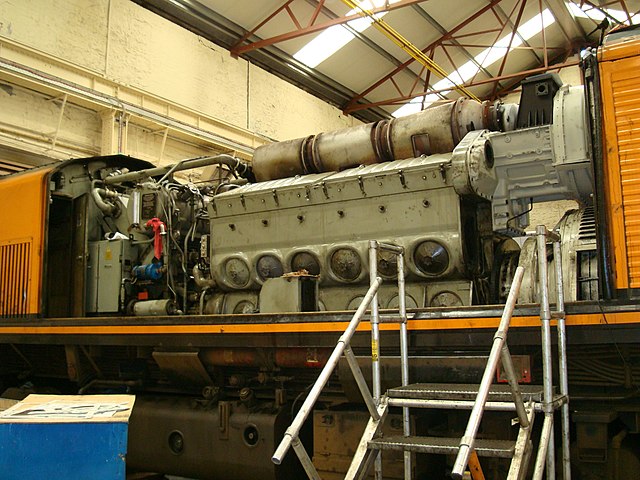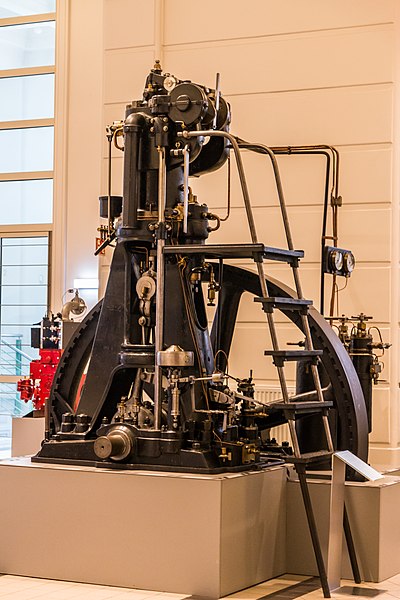The EMD 710 is a line of diesel engines built by Electro-Motive Diesel. The 710 series replaced the earlier EMD 645 series when the 645F series proved to be unreliable in the early 1980s 50-series locomotives which featured a maximum engine speed of 950 rpm. The EMD 710 is a relatively large medium-speed two-stroke diesel engine that has 710 cubic inches displacement per cylinder, and a maximum engine speed of 900 rpm.
An EMD 12-710G3B engine, installed in an Iarnród Éireann 201 class locomotive
The diesel engine, named after Rudolf Diesel, is an internal combustion engine in which ignition of the fuel is caused by the elevated temperature of the air in the cylinder due to mechanical compression; thus, the diesel engine is called a compression-ignition engine. This contrasts with engines using spark plug-ignition of the air-fuel mixture, such as a petrol engine or a gas engine.
Diesel engine built by Langen & Wolf under licence, 1898
Rudolf Diesel's 1893 patent on a rational heat motor
Diesel's second prototype. It is a modification of the first experimental engine. On 17 February 1894, this engine ran under its own power for the first time. Effective efficiency 16.6% Fuel consumption 519 g·kW−1·h−1
First fully functional diesel engine, designed by Imanuel Lauster, built from scratch, and finished by October 1896. Rated power 13.1 kW Effective efficiency 26.2% Fuel consumption 324 g·kW−1·h−1.





